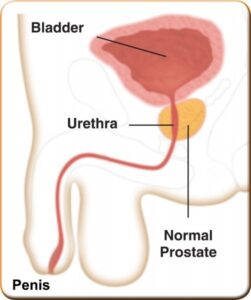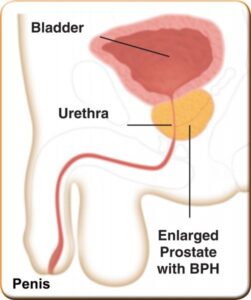What is BPH?
The prostate is a male reproductive gland, about the size of a walnut, that produces fluid for semen. The prostate surrounds the urethra, which is the tube that carries urine from the bladder out of the body.
The prostate goes through two main growth periods as a man ages. The first occurs early in puberty when the prostate doubles in size. The second phase of growth begins around age 25 and continues during most of a man’s life. Benign prostatic hyperplasia often occurs with the second growth phase.
Normal Prostate Enlarged Prostate


